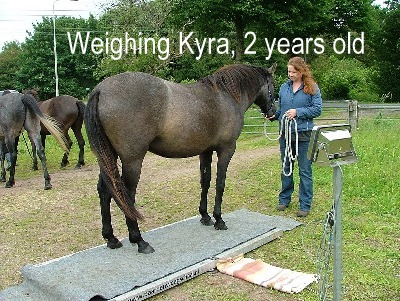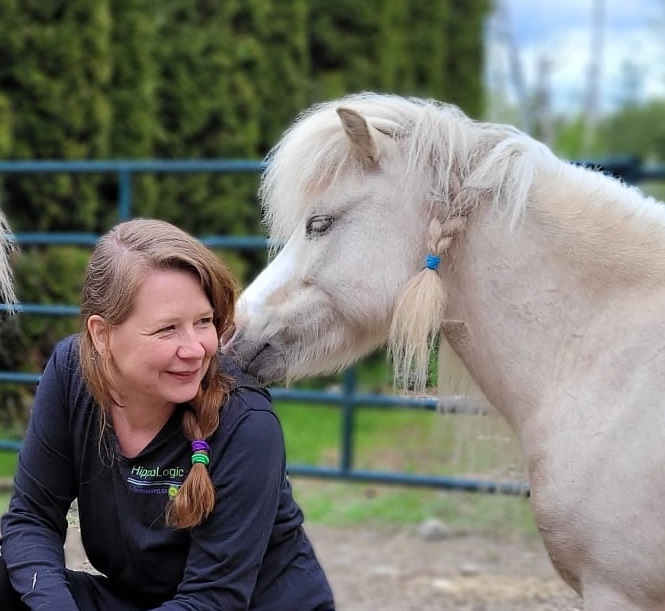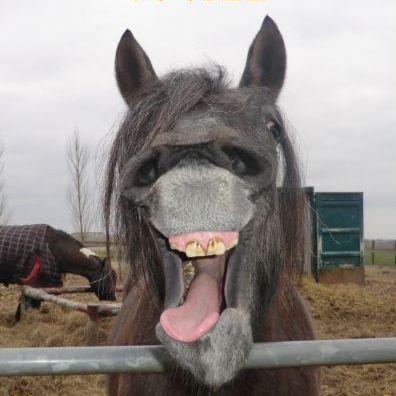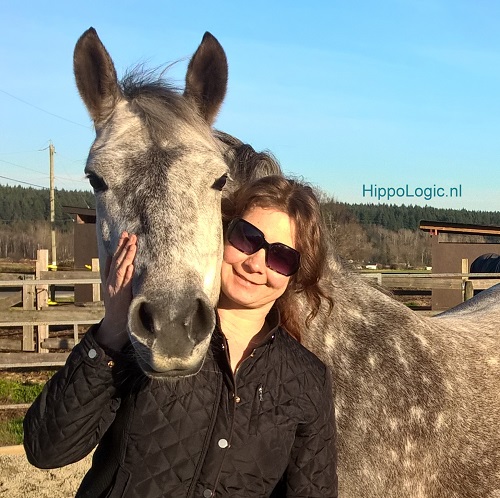When your horse foundered and is recovering you’ve probably got advice from your vet: exercise your horse more, get him fit and put him on a (restrictive) diet. When you’re a clicker trainer you might not want to lunge or round pen your horse and riding isn’t yet an option. Or, you have a non ridden horse, that you need to get in shape. The first step is to create a tailored exercise plan for your horse! Here’s how to do start.
Exercise Plan for Your Horse
Your horse needs a tailored plan. That’s why all the other training plans will fail you. Start asking yourself what your goal is and what your horse can do. If he’s recovering from a laminitis attack or is overweight, you have to ease him into an Exercise plan.

Start where your horse is at
Don’t be afraid to start were your horse is at. Even 5 minutes a day can have an impact, if your horse is at zero minutes a day and you’re consistent!
Consistency is key in exercising an overweight horse. Five minutes of hand walking your horse 7 days a week, for two months has more impact (and is safer!) than starting with 4 times 45 minutes and then dropping the ball after week 1.
I’ve had amazing results with my 5-minute, 5-day (walking) movement challenges and my 10-minute/day for 10 days.
Once you’re consistent you’ll discover amazing things: you do have time! Your horse loves it. The more you do this, the easier it gets! And so on. What you’ll discover is hard to say, but 5 days/5 minutes or the 10 days/10 minute Movement Challenge will shift things, for sure! You can start and try it out!
Use Positive Reinforcement (R+) to Motivate your Horse
A lot of overweight horses are reluctant to exercise. Is that your horse, too? Does he walk slowly or is he stopping on his way to the arena? Is he arena sour?
With positive reinforcement (clicker) training you’ll give your horse something valuable in return for his efforts! This will make him engaged! There is a Win for him, too!
In clicker training we don’t keep offering as much food rewards as we offer in the beginning. Purpose is to fade out the clicks and treats, once a behaviour (eg forward movement/walk) is consistently offered and on cue. Don’t let the amount of “treats” holding you back from using R+.
Set a CLEAR Training Goal for your Horse
Step 1 to create a tailored exercise plan for your horse is to start with a clear and measurable goal!
Most people (and you might recognize yourself in this) set goals that are either too broad, too vague or are too perfect.
Failure: Goal is too vague
- “I want my horse to be healthy”
- “I want my horse to be feeling better”
- “I want my horse to be happy”
How can you measure this? What are health indicators? If you want your horse to “feel better”, what does that mean? How is he feeling now? How can you be sure about his feelings?
If he’s lethargic and reluctant to move, of course you want him to feel better and be more energetic, but if you don’t have a proper way to measure your baseline and your goal, you have no way to measure your progress.
When you can not measure your progress, you have no idea of what you’re doing is working. Changes are that you’ll fall of the band wagon soon. Making no progress at all is a recipe for quitting.
Success: ‘Measuring is Knowing’
Can you measure your starting point, your goal and your progress in between?
You can weigh your horse if you want him to lose weight, use a measuring tape or -even less exact- make clear before and after photos.

If you want your horse to be fitter, you can use a stopwatch to measure how long he can walk or trot without stopping. You can time your exercise sessions: starting with 5 minutes of walk, then 6, then 7 and so on. This way you’ll know for sure you’re increasing his stamina!


Pick Your Exercise
How are you going to make your horse fitter or help him lose weight? What kind of exercise are you going to use? Pick something that is feasible and you like doing. Pick something that you can see easy progress. [Read Exercising Overweight Non Ridden Horses: 7 Excellent Exercises for ideas].
Don’t make it too hard for your horse, or he’ll become reluctant and you might have to start using coercion to keep him going! This blog is all about accomplishing your goals with positive reinforcement.
Know that circles are very hard on the body and lines and the HippoLogic Rectangle are easier and more fun for your horse.

Tailor your exercise Training Plan to your Horse
Most internet training plans fail because their are not tailored to your horse. When your horse is recovering from laminitis you might not even want to ride. Then starting with 10 minutes of walk and trotting for 1 minute in week 2, won’t get you to your goal. This is not tailored to your horse, your situation.
Focus on what you can do
Find exercises that you can do. When you don’t have an arena to start walking your horse, go on the road. When your horse doesn’t want to leave the barn, take a friend with you. Focus on solutions and the more you’ll do that, the more solutions you’ll see!
Tailor your Plan to your Horse
Your plan will be successful when you tailor your Exercise Plan to your horse, your environment and your schedule! You’ll stay motivated when you have ways to measure your progress.
Eager to get started?
Create your own Exercise Training Plan with HippoLogic
Are you ready to create a tailored Exercise Training Plan for your Horse? I got you covered. My 45-minute Masterclass comes with a workbook that you can fill in. I guide you a step-by-step though the process of creating a tailored training plan for your horse.
Set your goal based on the 30 points covered in the workbook, to make sure your goal will be super clear, that it’s is measurable and feasible for your horse and a proven 3-step framework to set you up for success!
Free for HippoLogic Academy members!

Click the image ⬆️ to learn more and get the Masterclass and Workbook, so you can make your own training plan.
You might be interested in these blogs
- 3 Steps to Successfully build an Exercise routine for your Overweight Horse or Whoa-Horse
- Treats in training for Overweight Horses?
Happy Horse training! You are the trainer!
Sandra Poppema, HippoLogic










You must be logged in to post a comment.